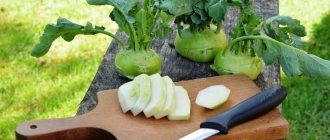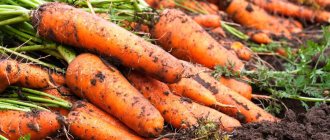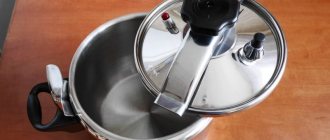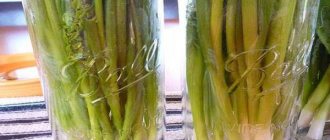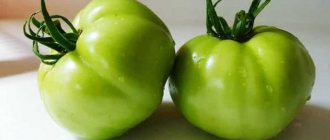2606.18
Author: Irina
0
All gardeners and gardeners value their work associated with growing vegetables and fruits. Therefore, so that all efforts are not in vain, you need to be able to properly store the crop. Then in winter it will be possible to replenish the supply of vitamins and nutrients in the body with the help of self-grown vegetables and fruits. This article discusses the features of crop storage.
Potato
■ Place 3-4 apples in the box where the potatoes are stored: this will prevent the tubers from sprouting.
■ Instead of apples, you can use rowan leaves - a handful of leaves is enough for 5 kg of tubers.
Article on the topic Harvesting potatoes. How to preserve the harvest and prepare tubers for planting?
■ “Dark places with a temperature of 5-10 ° C are optimal for storing potatoes - choose wooden boxes, canvas bags or thermal cellars,” says the deputy. Head of the Department of Higher Plants, Faculty of Biology, Moscow State University Vladimir Murashev.
How to store root crops in winter
The safety of root vegetables (turnips, beets, parsnips, rutabaga, carrots) depends on their integrity. Before planting, we clean them from the soil, dry them well, and cut off the tops, preventing the vegetables from sprouting. Leave the roots intact. We store the above crops in wooden boxes and containers. To do this, we lay the root vegetables in rows, sprinkling the vegetables with dry sawdust, peat, sand, onion peels, and grass. To prevent certain diseases (these problems occur in carrots and beets), add ground chalk (1:10) to sand and peat.
Carrot
It is perfectly preserved in clay. To do this, dip the carrots in a clay mixture and dry it in the sun. A popular method among gardeners is to preserve carrots in moistened sand. We put it in slides up to 1 m. We place the vegetables with their heads facing out. Sprinkle all rows of root vegetables with wet sand, forming a 1 cm layer. As it dries, sprinkle the slides with water.
There is a good option using a wet mixture of sawdust and shavings in boxes with small holes (so that it does not spill out) or cardboard boxes. At the same time, having laid out the initial layer of sawdust with shavings, lay out the carrots and the mixture in layers, completing the entire laying process with the latter. A mandatory action in this process is trimming the ends of the carrots on both sides (see photo)! If there is high humidity in the basement, you can also use a dry mixture, but in this case, the size of the carrots will decrease slightly over the winter due to a decrease in moisture in it. However, on large vegetables this is completely unnoticeable.
Dipping root vegetables into a chalk solution also gives good results. After the procedure, we dry them and form small piles of them.
Potato
It’s worth talking about it in more detail. There are many proven ways to store this culture over the years. In some villages, potatoes are still stored in trenches, covering the tubers with a large layer of straw and turf. This root vegetable should dry well in the air in the shade at 14-18 degrees. We place the tubers in wooden boxes and containers with slots in the walls, placing them on pallets that separate the vegetables from the floor by 20-25 cm. The thickness of the layer of tubers in the containers should not be more than 1 m. On top of the potatoes we place various root vegetables (beets are suitable), which will normalize humidity. The tubers will not become soggy, and the root vegetables will absorb moisture and remain fresh for a long time.
If there are not too many potatoes, we can also store them on non-woven material, on which we spread the tubers as evenly as possible. Cover them with burlap on top. In the old days, potatoes were sprinkled with dried red mint, wormwood, thyme, birch, elderberry, and rowan leaves for the winter. These plants, which secrete phytoncides and cleanse the atmosphere of bacteria, contribute to the preservation of vegetables.
We store potatoes for planting separately, sprinkling them with crushed chalk or wood ash, maintaining an optimal temperature of 2-4 degrees. We regularly sort through the stored tubers, removing diseased specimens and breaking off sprouts. When the temperature drops significantly, to prevent root crops from freezing, cover them with straw, blankets or old clothes. When humidity increases, pour lime flour onto the floor, which perfectly absorbs excess moisture.
Horseradish
During the cold autumn-winter period, fresh horseradish is also in demand. To store it, we select intact roots from which we cut off the tops. We embed the horseradish in wet sand located in the boxes. The optimal temperature is 4-5 degrees.
Radish
For some time, you can keep radishes (how to grow them) of autumn varieties fresh, preventing them from withering. To do this, cut off the tops 2.5-3 cm from the root crop. Leave the roots intact. Place the radishes in plastic bags. This procedure will keep the vegetable fresh in the refrigerator for several weeks. Radish varieties such as Red Giant and Dungan are stored until December. To do this, we clean the harvest collected before the onset of frost. We cut off the tops and roots of root vegetables and place the vegetables in rows in boxes, sprinkling them with wet sand. We moisten it periodically by sprinkling with water, maintaining a temperature of 1-2 degrees.
Carrot
■ Until the New Year, the carrots will remain... in the sand. To prevent unpleasant insects from infesting it, heat the sand in a frying pan.
■ Instead of sand, there can be well-dried onion peels or wood (preferably pine) sawdust. For a kilogram of carrots you need 2-3 cups of “filler”.
■ Carrots collected from the garden in hot weather are the worst to store. Eat it first, and store the one you picked in the cold.
■ Sprigs of mint in boxes of carrots will help the carrots stay fresh longer.
We freeze, dry, marinate. How to preserve the harvest of carrots, beets and eggplants Read more
Beet
The next most popular are, perhaps, beets and carrots. Without these vegetables you can’t make borscht or prepare salads.
When and how to harvest beets
The fact that it is time to harvest beets is indicated by the drying of its lower leaves, the correspondence of the diameter of the root crop to the varietal size, and the formation of characteristic growths on individual alyssums. Depending on the early ripening of the variety, these signs can be observed at different times, but in general, beets are harvested from the beginning of September until the end of October (depending on the climatic zone).
Beet.
It is better to collect root vegetables by hand, however, if the amount of work is large enough, you can use a pitchfork.
Preparation for storage
The dug up alyssum must be carefully cleaned from the ground (it is better to do this with your hands wearing fabric gloves), remove the tops from it with a sharp knife (at a height of 2 - 3 mm from the head), and after drying it, place it in the basement.
To prolong the shelf life of root crops, it is better to start harvesting in dry, sunny weather. If this is not possible and the harvest was harvested during the rainy period, before storing the beets, they must be dried. In cases where early frosts unexpectedly occur and the beets are not harvested, they can be harvested even after frost, but such root vegetables will be sweet and watery and cannot be preserved for a long time.
Beet.
Storage
How to store beets? There are several methods here. The first is to sprinkle the beets with wet sand, the second is to place them on racks in one layer. In this case, the optimal temperature is + 2 - +3 °C, and the humidity level is 85%.
The storage location for beets can be a basement, cellar, closed insulated loggia or balcony. Sometimes, to free up additional storage space, it is laid on top of the potatoes. In this case, it also works as an absorbent - it absorbs excess moisture.
Beet.
When storing beets, it is worth remembering that root crops up to 10 cm in diameter are more shelf-stable, as well as those that have a round or elongated shape and, of course, late-ripening varieties.
Pumpkin
■ Store only thick-skinned fruits for a long time (read the description of the variety you grow).
■ Leave pumpkins with a long root, up to 20 cm, for storage.
■ Store them on the windowsill: the optimal temperature is 18°C and dry, but the pumpkin will be bad in the refrigerator.
Pumpkin hit parade. Which varieties are the fastest, easiest to ripen, and most delicious? More details
Storage conditions and periods
Corn can be stored in various ways. This is not difficult to do in normal home conditions. The timing depends on the form in which you decide to store the corn.
On a note! The maximum period is 3 years for corn grains canned in glass containers. The shelf life of canned corn in metal cans is 2 years.
Frozen corn can be stored for quite a long time at sub-zero temperatures. You can put whole cobs or just the kernels in the freezer. Without losing their wonderful taste and beneficial qualities, they can stay in the freezer for more than a year. However, in a year there will be a new harvest and there is no point in longer storage.
You can store fresh corn on the cob in the refrigerator for quite a long period. The timing depends on how you prepare the product:
- the whole cobs will remain intact for 10 days,
- The shelf life of corn beans is up to 3 weeks, provided that they are carefully cut and placed in a vacuum container.
It is important to know for what purpose you are storing amber cereal and to properly prepare it for storage.
Pears
■ “For pears intended for storage, do not tear off the stem,” advises Stepan Yakovlev, “this way they will last longer.”
■ Like apples, you can wrap pears in toilet paper and place them in boxes.
■ Another way: “bury” the pears in a box with calcined sand. Make sure that the fruits do not touch.
Question answer
Which pears from the Moscow region are as sweet as those from the south?
■ Place the pears in layers in a box or box (always with air access, placing straw between the layers.
Tomatoes
■ Folk recipe: you need to prepare a mixture of egg white, salt and gelatin. Dip each fruit into it and let the tomatoes dry. This way they are stored for six months.
■ Another popular method: sterilized three-liter jars are filled with strong tomatoes and covered with dry mustard powder, covering the top with parchment.
■ Biologist Vladimir Murashev is less optimistic: “It makes no sense to store tomatoes for so long - after a couple of weeks there are almost no useful substances left in them. It’s better to buy greenhouses and not take up space.”
With grapes and garlic. Recipes for delicious tomato preparations Read more
Preparing green onions for the winter with salt without freezing
Pickling onions for the winter is a reliable and long-known method of harvesting. We only need greens and rock salt.
We will need:
- green onions - 500 gr.
- salt - 100 gr.
The onion should be washed and well dried. We will also need clean, dry jars.
1. Cut the feathers into rings and mix with half the salt (50 g) in a deep bowl.
2. Place the mixture in jars, alternating layers with the remaining salt.
Use regular table salt, non-iodized salt without any additives.
3. Close the jars with a lid and put them in the refrigerator for 2 weeks. During this time, the greens will release juice and as a result we will get an excellent snack.
When adding such an appetizer as a seasoning, you must remember that it contains a lot of salt and add less salt to the main dish.
Onion and garlic
■ Make holes in the cling film, wrap each head individually and place in the refrigerator in the vegetable compartment.
■ Onions store well buried in sand. The heads must be buried vertically.
■ Garlic heads can be treated with paraffin (from a melted candle) and placed in the cellar or on the balcony.
Question answer
Is it possible to plant garlic in winter?
■ Well-dried onions and garlic are perfectly stored indoors in wicker baskets.
■ If the room is dry, sprinkle the onions and garlic with peels: this will prevent them from drying out, and if it is humid, sprinkle them with ash or shavings, periodically changing the “filler”. Ash and sawdust will absorb excess moisture.
The most popular storage methods
At the end of summer and early autumn, the problem of storing gardening products arises not only for those who grew them on their own plots, but also for zealous owners who prefer to purchase them in the required volume during the period of lowest prices. Both of them put it in storage:
- to the cellar or cool basement;
- on a glazed balcony or loggia;
- in a refrigerator or household self-contained freezer or chest.
Fresh fruits and vegetables should be stored in cool, dry and dark areas, since light shining on them activates ongoing biological processes, which impairs the taste and shortens the possible shelf life.
Zucchini and eggplant
■ Store varieties with thick skin and small seeds.
■ Be sure to remove the zucchini for storage before frost, otherwise they will not last long.
■ Do not store overripe zucchini - their taste will deteriorate.
■ The “tail” of zucchini for long-term storage is at least 5 cm, the length of the vegetable itself is from 15 to 45 cm. Do not take fruits that are too small or too large.
■ Use old tights: place one zucchini in each stocking and hang it in a dry place.
■ Store the zucchini under the bed, just before wrapping each one in several layers of cling paper.
Eggplant vs zucchini. What is healthier and when should you eat them? More details
Cabbage
9. Clean the heads of cabbage from protruding leaves and coat with thick clay. Take the cabbage out to air dry, hanging it by the stalks. Thus, stack the fruits in the resulting shell in a heap in the basement or on the balcony. 10. Fill the storage boxes with dry sand 20 cm thick. Stick the cabbage into it, stalks down, at a distance of 3-5 cm from each other. The stalk must be at least 8 cm in length.
Conditions and shelf life. In a cool, high-humidity room for 5-6 months.
Apples
■ Take late, mature varieties. Wrap each apple in toilet paper and layer it in a cardboard box.
■ Bury the apples in onion peels and sawdust so that the fruits do not touch each other.
■ An exotic way is to dip apples in melted wax. They will last until next spring, but when you want to eat the fruits, you will have to peel off the skin.
■ Apples are best stored if they have been kept cool for 4-5 days after being removed from the tree.
■ Only apples taken from the tree are stored: all that fall must be eaten. Otherwise, one spoiled apple will cause damage to all.
Article on the topic
Supplies in the apartment. How to store harvest at home?
Proper winter storage of fruits
Undamaged fruits are suitable for storage. Place apples and pears in wooden boxes. Sprinkle the fruit with dry sawdust, shavings, and hay. We get very good results from storing fruits wrapped in special paper treated with oil. This way you can prevent massive rotting. Treating them with glycerin also gives good results. To do this, wipe each fruit with a cloth soaked in this substance. It is advisable to keep fruits away from strong-smelling vegetables. The optimal temperature is 0-5 degrees, and humidity is 85-90%.
Grape
Some of its varieties (with dense pulp and thick skin) can be stored in a dry and cool room. To do this, we select the best bunches. Lay paper on dry sawdust. We lay bunches of grapes on it in one layer. Cover the top of the fruit with a cotton cloth. We periodically inspect the bunches, removing rotten berries.
Watermelons and melons
We store watermelons and melons indoors, placing them on a wire tray in one row. All ponytails should point up. We transfer these fruits with dry wood shavings so that they do not touch each other. Optimal temperature: 3-5 degrees. Unripe melons are suitable for storage; they will acquire the required ripeness during this time.
Important!
■ Before you put the fruits away for storage, they CANNOT be washed! “The surface of the fruit is covered with the finest natural wax,” explains Vladimir Murashev. — It has the effect of a natural antiseptic and preservative, preventing the penetration of oxygen inside. If you wash or wipe the fruit with a rag, the wax will be broken - in this case, rapid spoilage cannot be avoided.”
■ If you store crops on the balcony, check the temperature: when it drops below -10°C at night, all supplies will need to be brought inside.
■ The oldest and most reliable, but rather exotic way to preserve fruits until next spring is to coat them individually with liquid clay and dry them.
■ If you find a spoiled vegetable in a box where you store fruits, throw it away immediately, and use the ones stored nearby: unfortunately, they will no longer be able to lie there for a long time.
Advantages and disadvantages
The advantages of the technology for storing root vegetables in sawdust include:
beneficial effect on the preservation of vegetables;- poor moisture permeability (which protects carrots from infections and diseases);
- sawdust does not stick to the vegetable (unlike sand, in which carrots are also stored) and it is easy to clean it off after the storage period.
But this storage method also has disadvantages.:
- labor-intensive, since when backfilling you need to pour each layer separately;
- dust from the sawdust itself, which can cause an allergic reaction.

